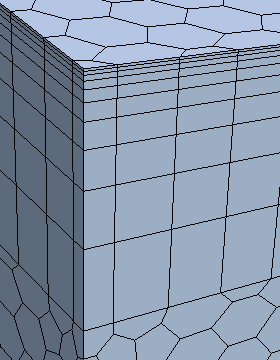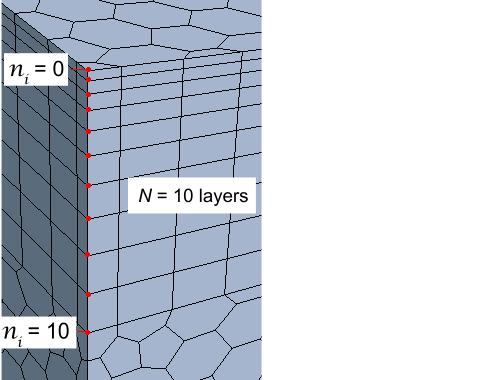Working with the Stretching Function
The stretching function determines the underlying formula that is used to generate the cell layer thickness distribution.
Two options are provided: geometric progression and hyperbolic tangent.
Geometric Progression
This default option distributes the cell layers using simple geometric relationships. The stretching factor between adjacent cell layers is always calculated as a constant value. An example of a prism layer that is constructed using 10 layers with geometric progression is given below. A Prism Layer Stretching factor of 1.5 (default) is used for the entire prism layer.

Hyperbolic Tangent
This option distributes the cell layers according to a one-parameter hyperbolic tangent stretching function:
where N is the total number of layers, is the current node, is the overall stretching factor, and is the distribution value for node . Note that , so that for 5 layers, takes the values 0, 1, 2, 3, 4, 5.
For more information, see Prism Layer Mesh Bibliography.
The relation between nodes and layers is depicted in the diagram below.

An overall Prism Layer Stretching factor of 1.5 for 10 layers gives a distribution as shown above. The size ratio between layers is no longer constant, but is modified to give a smoother transition between cell thicknesses across the whole prism layer. This option allows tighter spacing of near-wall prism layers while avoiding large spacing of the outer prism layers.